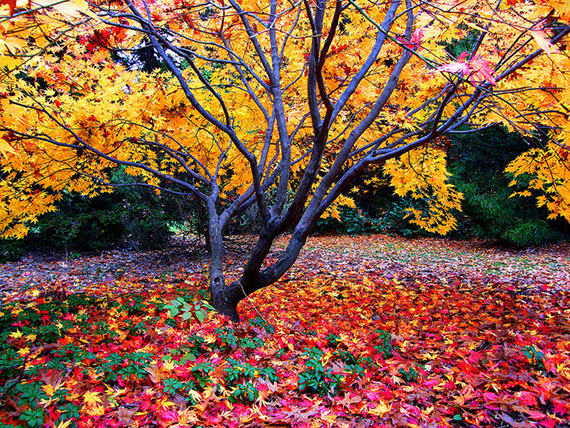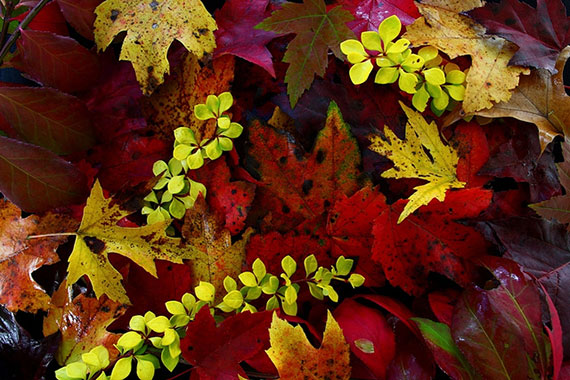Fall is upon us and that means it’s time to take some memorable foliage photos. The turning leaves create vibrant multicolor scenes that almost photograph themselves. The vivid gold, orange, green, and red colors provide many photographic possibilities, but it’s up to the photographer to capture and frame these elements into a pleasing piece of art.

Photo by Stanley Zimny; ISO 100, f/3.2, 1/60-second exposure.
Professional photographers using high-end equipment have produced breathtaking views of fall, but if you do your homework and follow a few simple steps you can do the same even with a modest camera.
Location, Location, Location
The first and most important step is to carefully choose your locations. Ideally this should be done before the leaves start to turn to give you more prep time, but as with most things, it’s better late than never.
It’s best to find 3 to 5 locations close to—or on the way to—where you live or work. This approach gives you options and also allows you to quickly take advantage of ever-changing light and weather conditions.
Choose locations that have a variety of tree species. The contrasting colors combined with the proper light can provide a gorgeous setting. The times just after sunrise and early evening generally work best.
Look for Big and Small
While you are scouting for, or shooting at you locations don’t forget to look for small objects. A collection of leaves on the ground can sometimes be more artistic than an array of multicolor trees in the distance.
Try to look at your location from every possible angle in order to take advantage of less than obvious shots. Also look for opportunities to capture reflections. Many times a scene’s beauty can double if it is also seen from a reflective lake, pond, or river.
Steady Does It
Another easy way to improve your fall photos is to use a tripod. If your shots are taken at a distance or in low light, the tripod will help to keep you camera steady and your pictures sharp. The tripod will also help if you want to take the same shot several times using different camera settings. I have found that when you find the perfect composition, but the light is not quite right or something unwanted is in the frame, the tripod is indispensable.
Color is Key
Color is what needs to stand out in your fall photos, so you should consider using the vibrant mode setting on your camera if it’s available. If your camera is not equipped with this setting you can increase saturation to achieve the same effect.

Photo by Forest Wander; ISO 100, f/22.0, 30-second exposure.
You can also tweak your photos after the fact with a photo editing program. Programs such as Adobe Photoshop Elements and Corel PaintShop Photo Pro allow you to adjust exposure, saturation, and contrast to improve the overall look of your photos. If your photos were captured using the RAW setting on your camera you will have the maximum flexibility during the editing process.
These steps should help your turn beautiful autumn scenes and objects into photos that can be enjoyed forever.
About the Author:
Article written by John Pitt, website currently under construction.
Like This Article?
Don't Miss The Next One!
Join over 100,000 photographers of all experience levels who receive our free photography tips and articles to stay current:






Leave a Reply